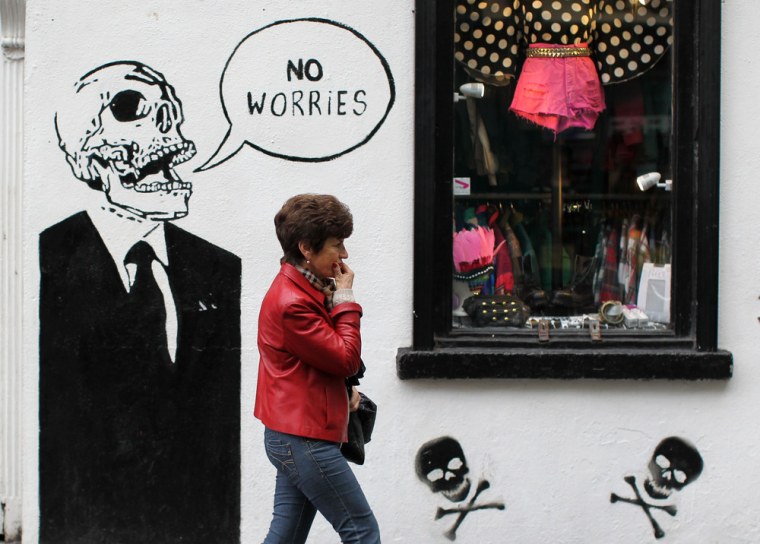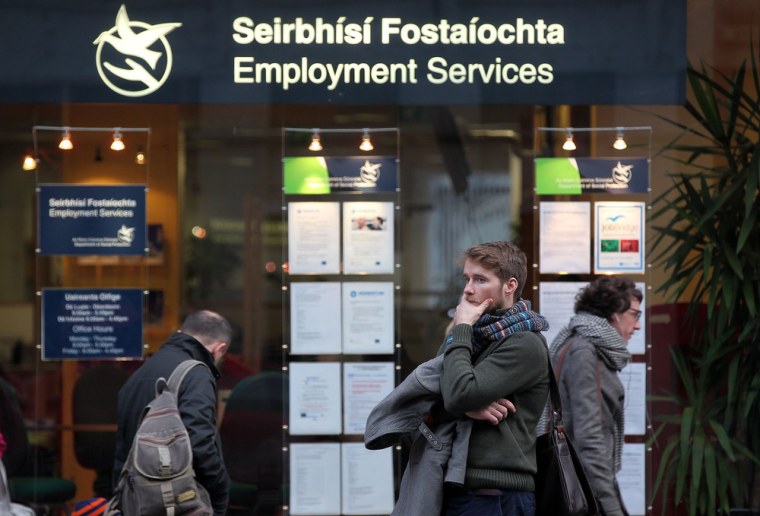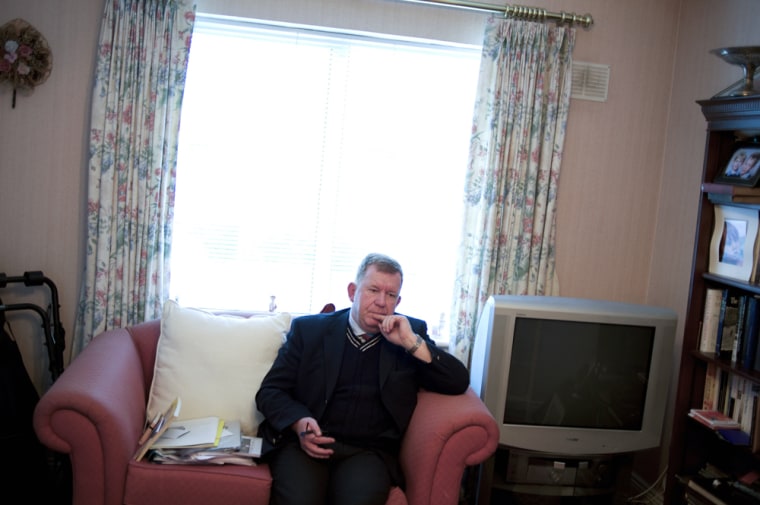On the rare days when John Donovan visits downtown Dublin, there is a buzz in the air: Streets bustle with pedestrians. “Sold” signs festoon Georgian brick buildings that had languished on the market for years. At Silicon Docks, a hub where Google, Facebook and other tech companies are clustered, crowds of taxis line up for easy fares.
It certainly looks like Ireland is recovering from near economic collapse. And this weekend Ireland will technically become the first of Europe’s crisis-hit countries to emerge from an international financial rescue program.
But in the suburb of Shankill where Mr. Donovan, 55, lives, the economic hubbub is absent. Many of his neighbors are barely scraping by. He moved into his mother’s small cottage after his hardware supply business buckled during the crisis. With his scant savings eroded, he shoots pigeons for food and grills them outdoors to reduce his gas and grocery bills. “I do that just to live," he said.
“The Irish people have endured a horrendous time,” Mr. Donovan said. “The government must take their foot off the neck of the nation.”
The Irish government’s severe austerity program was a condition of the €67.5 billion, or $92.9 billion, lifeline it received amid a severe banking crisis. But in part because of the sharp cutbacks, Ireland has regained the confidence of investors and will no longer need to rely on the international loans. It can now borrow money in financial markets at low interest rates. But it still must repay most of the loans it has received, which could take decades.
While it has been painful for Ireland’s citizens, it is an achievement European leaders are hailing as a sign that Europe is moving past the worst of a five-year crisis. And with Greece, Portugal and Cyprus still struggling to exit their multibillion-euro bailouts, Ireland is being held up as nothing less than a symbol for recovery.
International investors have been impressed with Ireland’s ability to improve its finances: The interest on its 10-year bond has been reduced to 3.5 percent from 14.5 percent. Newspaper headlines announce hundreds of new jobs weekly, especially in technology. A small revival is even blooming in construction, which imploded when the Celtic Tiger economy went bust.
But the rigor required to get there has been painful. The government cut 30 billion euros in spending, or nearly 20 percent of gross domestic product, one of the largest austerity programs anywhere. New taxes were introduced. Salaries for public employees were cut by around 20 percent, and reductions in unemployment and welfare benefits followed. The bill to bail out Ireland’s banks has amounted to nearly €10,000 per Irish citizen.
Related:
“Ireland is the closest thing to a success story that European leaders have,” said Simon Tilford, the chief economist at the Centre for European Reform in London. “But it doesn’t really stand up to scrutiny because there’s been a huge fall in the domestic economy and living standards.”
Martin Brennan earns €9.50 an hour cleaning a hospital near his home in the working-class Dublin suburb of Drimnagh and his wife gets €380 working three days a week in a university administrative job. After buying food and paying bills, there is little money to spare for his family of four. With bailout-linked taxes on property and income, “we have nothing left over,” he said.
Nearly everyone the Brennans know is underwater on their mortgage. Several neighbors were out of work, including a man who was recently fired with 11 others at a family business that collapsed. Martin Brennan shuddered as he talked about how several hospital employees had started going to a soup kitchen for meals. “People are eating cornflakes for dinner,” he said. “Economists say it’s an urban legend. Tell them it’s for real.”
Such hardships may persist well after Ireland exits its bailout. Because financial rigor will still be needed to maintain Ireland’s creditworthiness, Prime Minister Enda Kenny is planning to introduce a further €2.5 billion in spending cuts and new taxes next year.
Finance Minister Michael Noonan said that Ireland was trying to “grow the economy, create jobs and tackle the unacceptably high unemployment levels.” Growth is expected to rebound to 1.8 percent in 2014. Unemployment is still high at 12.8 percent for the quarter, but is declining after the economy added 58,000 jobs this year.

Still, Ireland must stick to fiscal targets, he said. Debt, at 123 percent of gross domestic product, should fall once Ireland is extracted from the bailout. The deficit, which has shrunk to 7.5 percent of G.D.P. from 30 percent in 2010, should also continue to decline.
As the austerity measures have played out, the number of people in need has jumped. Homelessness is up nearly 20 percent since 2010. A study by Growing Up in Ireland tracking 11,000 families with young children found 67 percent could not afford basic necessities, and were behind on utility bills, rent and the mortgage.
Consumer spending has been flat and two-thirds of homeowners have not paid their mortgage on time for the last two years, according to the central bank. Half of all loans to small- and medium-size business are also in arrears.
More than 200,000 of Ireland’s population of 4.6 million have emigrated since 2008. Youth unemployment is 28 percent. Over 60 percent of job seekers have been out of work for a year or more. And 20 percent of children now live in households where neither parent works, the highest rate in the European Union.

Mr. Donovan labored to recover from the bust. He went from owning a five-bedroom home, boats and cars to figuring out a way to survive.
A stout, energetic man, he was determined to turn his life around. After recovering from depression, he entered a government retraining program and obtained masters’ degrees in law and business. But of the 1,583 résumés he sent out, only four interviews materialized.
“There were jobs, but no one wants to hire a 55-year-old,” he said. Eventually, a friend with a construction supply business gave him an internship. At €22,000, or about $30,000 a year, it didn’t pay much more than welfare. “But I want to work,” he said. A chill permeated his home as he kept the heat off to make ends meet; he said he had cut out all extraneous expenses.
Although Shankill appeared affluent — just 10 minutes from where Bono’s mansion overlooks the Irish Sea — Mr. Donovan said about 10 percent of the 17,000 inhabitants were underwater on their mortgages. Neighbors of Mr. Donovan’s who were builders, cleaners and florists all lost their businesses, and the local pub owner closed two of his three pubs.
The austerity was squeezing most people Mr. Donovan knew. “The government, in a moment of madness, has burdened every man, woman and child with a debt we may never escape,” he said. “We are on our backside.”
Mr. Brennan, the hospital worker, thought the same thing. He knew the government was laboring to fix the economy. But he did not expect to see the improvement in his lifetime. “We’ve already tried to live five years on nothing,” Mr. Brennan said. “If they push things much more, it’ll kill us.”
This story, "," originally appeared in The New York Times.
